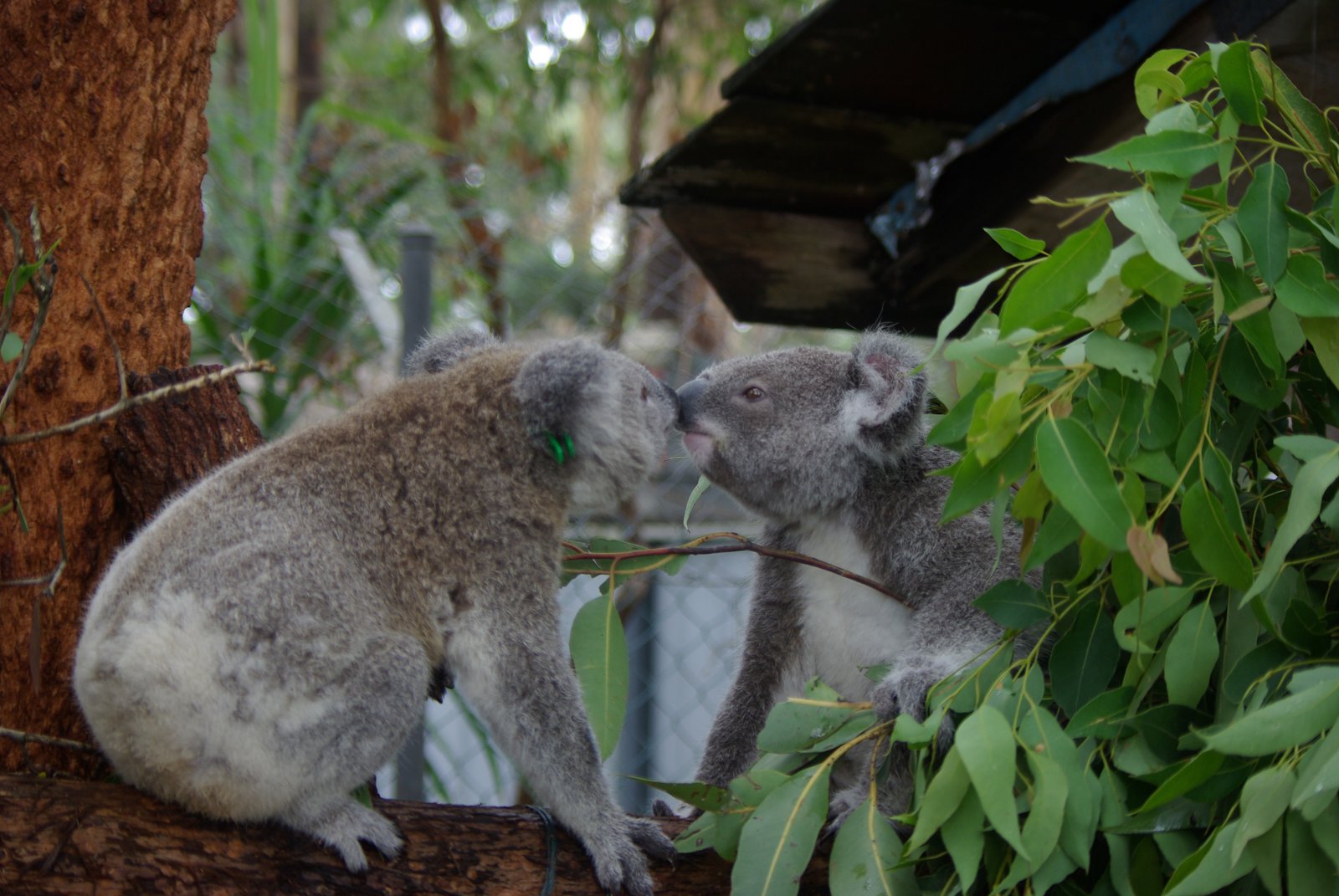The Koala and its Retroviruses
Koala retrovirus (KoRV) is a virus widespread in koalas and is closely related to Human T cell leukemia virus HTLV as well as retroviruses infecting mice, cats and gibbon apes. Retroviruses are known to induce tumors and/or immunodeficiency, so naturally researchers are investigating whether or not this may be the case for the koala – an iconic and unique Australian animal.
KoRV is known to integrate itself into the genome of the Koala (this is also known as ‘endogenisation’), which makes it able to be passed from parents to offspring via their DNA (vertical transmission) where the retrovirus can insert directly into the DNA of the egg or sperm. In addition, KoRV is also suspected to be transmitted from animal to animal (horizontal transmission), similar to HIV-1 viral transmission in humans, adding complication and urgency to our understanding of this virus and exactly how it affects koalas.

© unknown
Recently, the retrovirus was isolated from koalas dying from lymphoid malignancies (cancers associated with the lymphatic system) in a North American zoo, prompting great concern about Koala population management and whether or not KoRV plays a role in causing lymphoid neoplasia (tumors associated with the lymphatic system and whether or not it is involved in disease immunosuppression.
This concern gave rise to a workshop to expand the knowledge of KoRV, and ultimately promote koala conservation in the face of KoRV by aiming to apply the scientific knowledge to koala population management. “The Koala and its Retroviruses: Implications for Sustainability and Survival” was held at the San Diego Zoo Global Koala Conservation Workshop in April 2013. Over 70 people from Australia, Europe, Japan, and North America attended.
The first day of the workshop was based around the current state of foundational research of KoRV, the level of impact of KoRV on both captive and free-ranging koala populations, the different diseases related to KoRV infection, koala immunology, and what future research is needed to further our understanding of KoRV. The second day was based on the need for applied research, what we could learn from other well-researched retrovirus models (e.g. HIV treatment, FeLV vaccination), the role of KoRV in Chlamydial infections in koalas, strategies to reduce the spread and disease expression of KoRV, and determining the zoonotic risk of KoRV.
The research presented and discussed at the two-day workshop demonstrated that although much progress has been made in understanding KoRV and its influence on koala health, a great deal remains to be learned.
An article on the Australian Museum’s work on the Koala Genome Consortium is included in this special issue. The Australian Museum is excited to be part of such important applied research as the genome data assembly will provide critical insight into how KoRV inserts into the koala genome and how it might be inherited or transmitted between individual koalas. We hope that this will result in real conservation outcomes for this important and much loved species worldwide.
Dr Rebecca N Johnson
Head, Australian Centre for Wildlife Genomics
More information:
Johnson R.N., Hobbs, M., Eldridge, M.D.B, King, A.G. Colgan, D.G., Wilkins, M.R., Chen, Z., Prentis, P.J., Pavasovic, A., Polkinghorne, A., Timms, P. (2014). Technical Reports of the Australian Museum (Online). 24: 91–92.
View all articles from the special issue of Technical Reports of the Australian Museum

